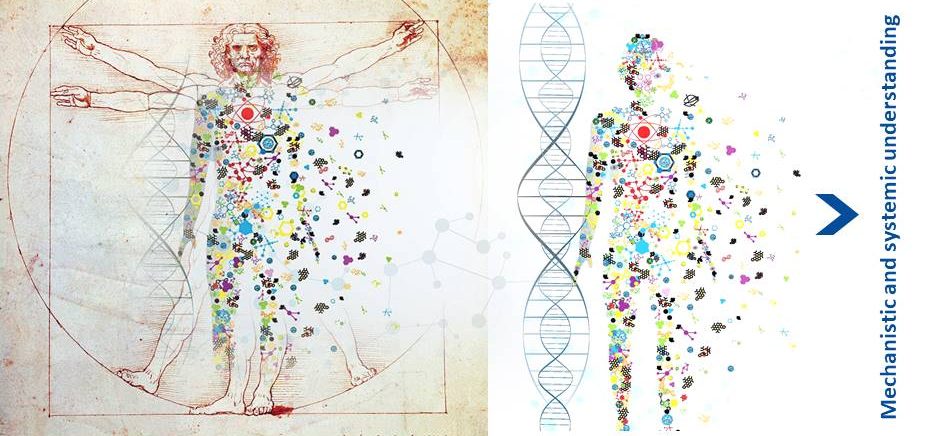The overall goal of DECISION is to optimally tailor the treatment that each cirrhosis patient receives to their gender, individual genetic setup, and personal medical history. In doing so, we hope to reduce the currently much too high mortality rate amongst cirrhosis patients that are hospitalised when their body can no longer compensate for the dysfunctional liver (acute decompensation of cirrhosis). The fact that cirrhosis patients with acute decompensatory symptoms respond so differently to standard treatment poses a major challenge in personalized medicine. To tackle this challenge, several steps need to be taken that lead up to the final step, the clinical trial.
Step 1 – Deeper mechanistic and systemic understanding of disease and treatment response
In order to identify the optimal combinatorial therapy, we first need to better understand the disease holistically at the systems level. To achieve this, the data analysis experts in work package 3 (WP3) will combine all existing and newly acquired data from work packages 1 and 2 (WP1-2) into a “whole-body systems medicine framework” that is focused on the deeper mechanistic understanding of both the disease and the causes that underly individual differences in response to treatment. This holistic and integrative approach will also be used to develop new prognostic and response tests and to identify the most promising novel combinatorial therapies for individual groups of patients with the same gender and/or similar medical history and genetic setup.

Step 2 – Preclinical studies to validate the best combinatorial therapies and to develop accurate and reliable prognostic and response tests
Once the best potential combinatorial therapies have been identified in theory by work package 3 (WP3), they first need to be validated in animal models of acute decompensation of cirrhosis and acute-on-chronic liver failure (ACLF). Also, the biomarker test aiming at accurately predicting whether a patient with acute decompensation of liver cirrhosis will benefit from standard treatment or not (prognostic test) needs to be optimised in the laboratory setting. The same has to happen for the biomarker test that will be used later on in the clinic to reliably predict whether a patient will benefit from a novel combinatorial therapy or not (response test). All these tasks will be completed by the preclinical research team of work package 4 (WP4).

Step 3 – Testing the most promising novel combinatorial therapy on real patients in the clinic
The final, and most important piece of the puzzle – from a cirrhosis patient’s point of view – is the proof of concept in a phase II randomized controlled clinical study. The trial will be closely supervised by clinicans and researchers of work package 5 (WP5) who will conduct the study in patients that come to the clinic with acute decompensation of liver cirrhosis. The first goal is, as always, to provide the best possible medical care for each patient. The second goal is to evaluate the most promising novel combinatorial therapy. The third goal is to assess in a real-world setting, the accuracy, practicability, and precision of the two newly developed biomarker tests for predicting (1) which patients with decompensated cirrhosis have a poor prognosis following standard treatment (prognostic test) and (2) which patients are more likely to benefit from a personalised novel combinatorial therapy (response test).